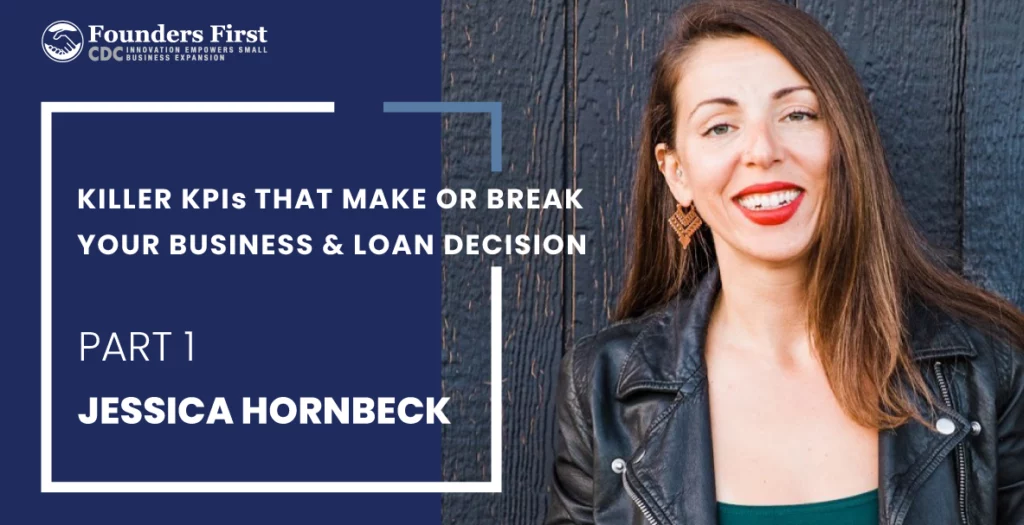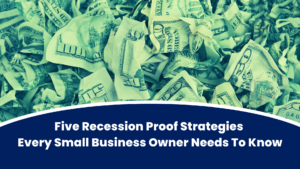Our guest blogger breaks down several key performance indicators (KPIs) that lenders look at before deciding on your business loan.
Special thanks to guest blogger Jessica Hornbeck, a professional accountant and outsourced CFO/COO, who, during a recent webinar, walked us through key KPIs businesses need to track to get funded.
When applying for a loan, there are several key performance indicators (KPIs) that lenders look at before making their decision. So, let’s make a quick run through financial statements – I know, everybody’s favorite topic – and discuss the KPIs you’ll find in them. Don’t be scared of that acronym. KPI is just a fancy word for metric.
Profit & Loss Statement
The first tool we’ll use in building out our KPIs is the profit and loss statement, or an income statement. It’s the story of the operations of your business or what you’re doing to make money and hopefully generate some profit.
The key contributors to that will be your income, or what you’re selling, then the cost of goods sold, which are your variable expenses. The quick way to remember the difference between your cost of goods sold (variable costs) and your fixed expenses is that cost of goods sold is a function of your making money. So you’re not going to have those unless you’re making money, which is very different from your overhead (your fixed costs). Those are costs you’re still on the hook for, even if you don’t have a customer coming in the door or going online to buy your product. These are going to be things like rent, specific insurance, etc. So, it’s essential to differentiate between these two types of expenses.
When looking at the cost of goods and you subtract it from income, you will end up with gross profit. That will be one of the largest, or most important, KPIs we have to keep our eye on.
Another metric of your P&L statement is your future projected income. We can build that out by looking at assumptions. Hopefully, you’re getting into economies of scale; it doesn’t cost you that same amount of variable expenses to make that dollar of income. So you should see a decrease in your cost of goods. Then you can build out projections over the next few years. This can put you in a position to attract outside capital. Or, at the very least, it can be part of your business plan. And it should be a management tool so that you can get a feel for whether this business will be a moneymaker and whether you should stick with it for the long haul.
Your projections aren’t the time to be overly optimistic – especially when you’re meeting with a lender. Sure, you want to see the bigger picture for yourself and be somewhat optimistic because that will help you bring in more revenue and customers in the door. Still, you don’t want to be overly optimistic.
Keep in mind projections are different from your budget. You can create either monthly or quarterly budgets from your projections. I recommend that you build those into your accounting software so that you have a basis for comparison any time you look at your financials. You want to be able to compare prior years and quarters, and also vs. your budget.
And if your revenue is dropping off, you need to look at metrics to understand the underlying cause. For example, are your leads drying up? Are your marketing efforts down? Are your conversions down? Or you’re spending too much to generate leads.
You also have to get in the habit of looking at your financial statements altogether to understand your business’s journey. We’ll never understand the complete picture by looking at just a P&L because the P&L just looks at your operations. In contrast, the balance sheet talks about the overall health of your organization.
The Balance Sheet
Your balance sheet is very different from your profit and loss statement. The P&L looks at your operations – and where are you making money, where are you losing money? The balance sheet looks at the overall health of your company. From a lender’s perspective, it’s critical to understand if your business is well capitalized, if you’re overly leveraged, etc. These items that feed into your KPIs – your liquidity ratio, how much you have in the bank, and your cash flow.
The balance sheet equation is always going to be this basic accounting formula. Assets (things you own that are of value) equals liabilities or equity. Maybe you borrowed a lot or funded your business by bootstrapping. Perhaps you formed a corporation that issues stock to investors. The balance sheet shows how you financed your cash and your assets. You can see if a business is on the hook to lenders or beholden to investors. You could be a very profitable company taking in a lot of money. But you have to look at the balance sheet to determine who owns the rights to those profits. So it’s critical to look at both the profit and loss statement and the balance sheet.
OK, I know you can only read so much about P&Ls and balance sheets in one sitting. So take a break, and in Part 2, we’re going to dig deeper into the KPIs that make or break your business.
Interested in funding? Take a look at different financing options from our partners.




